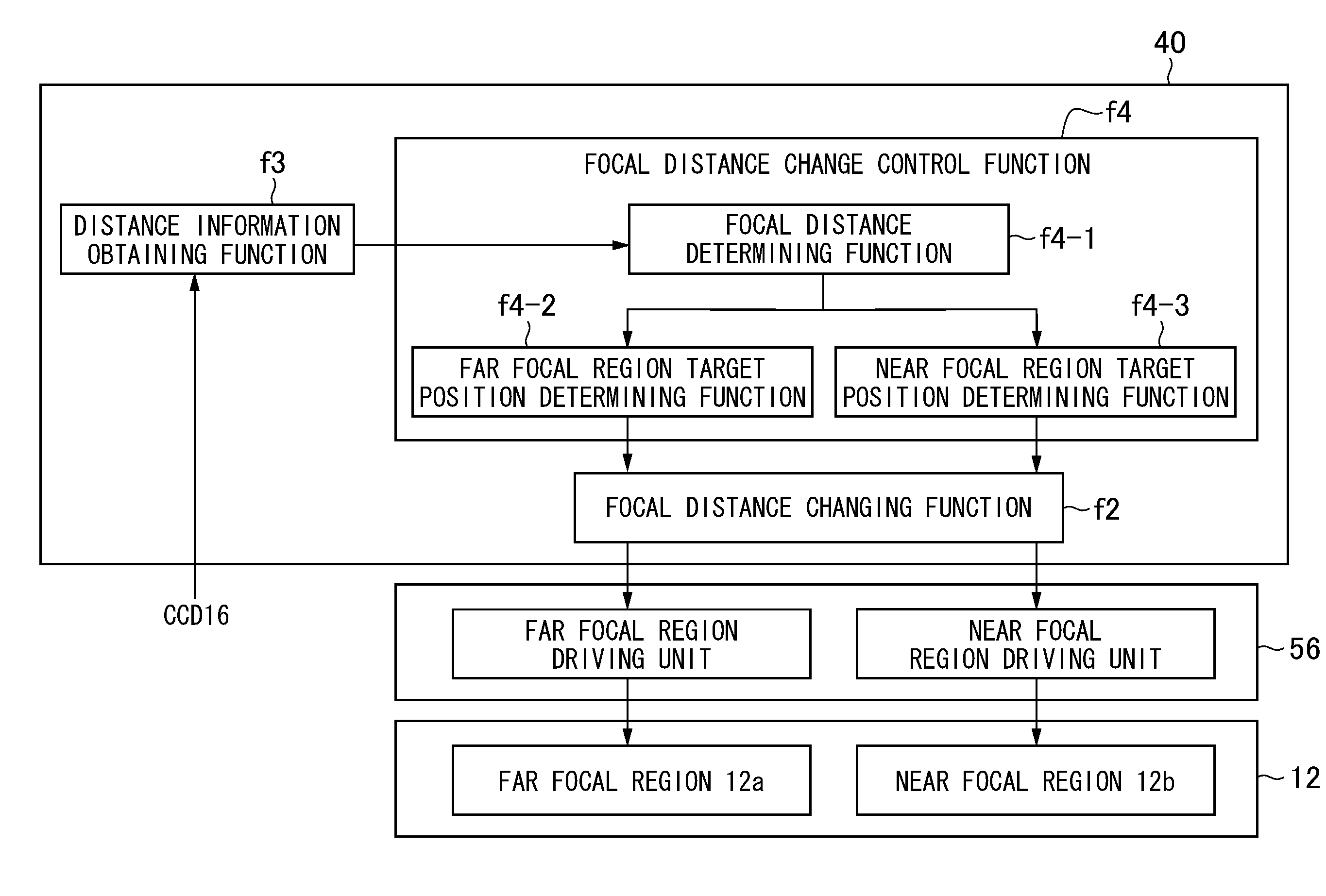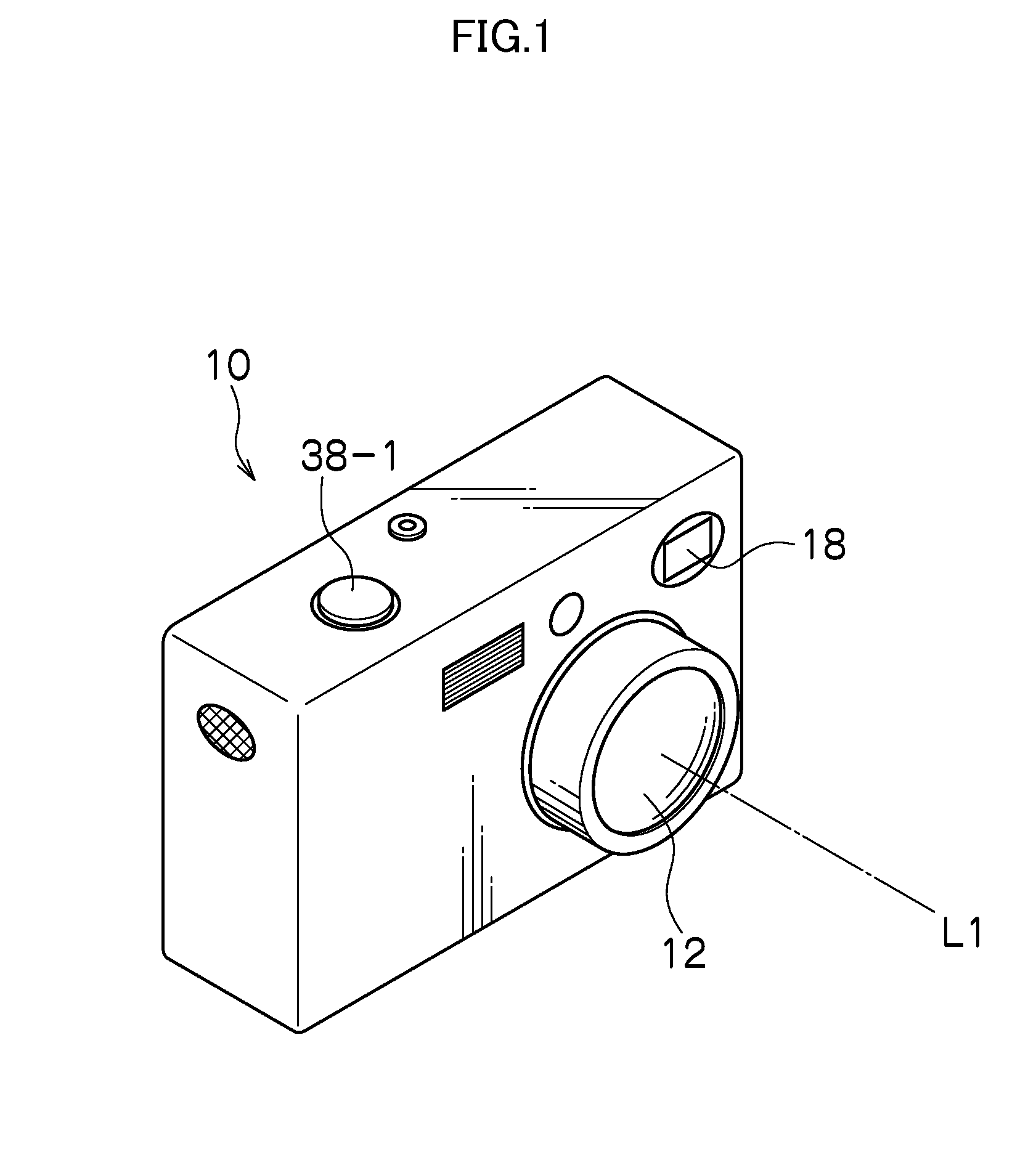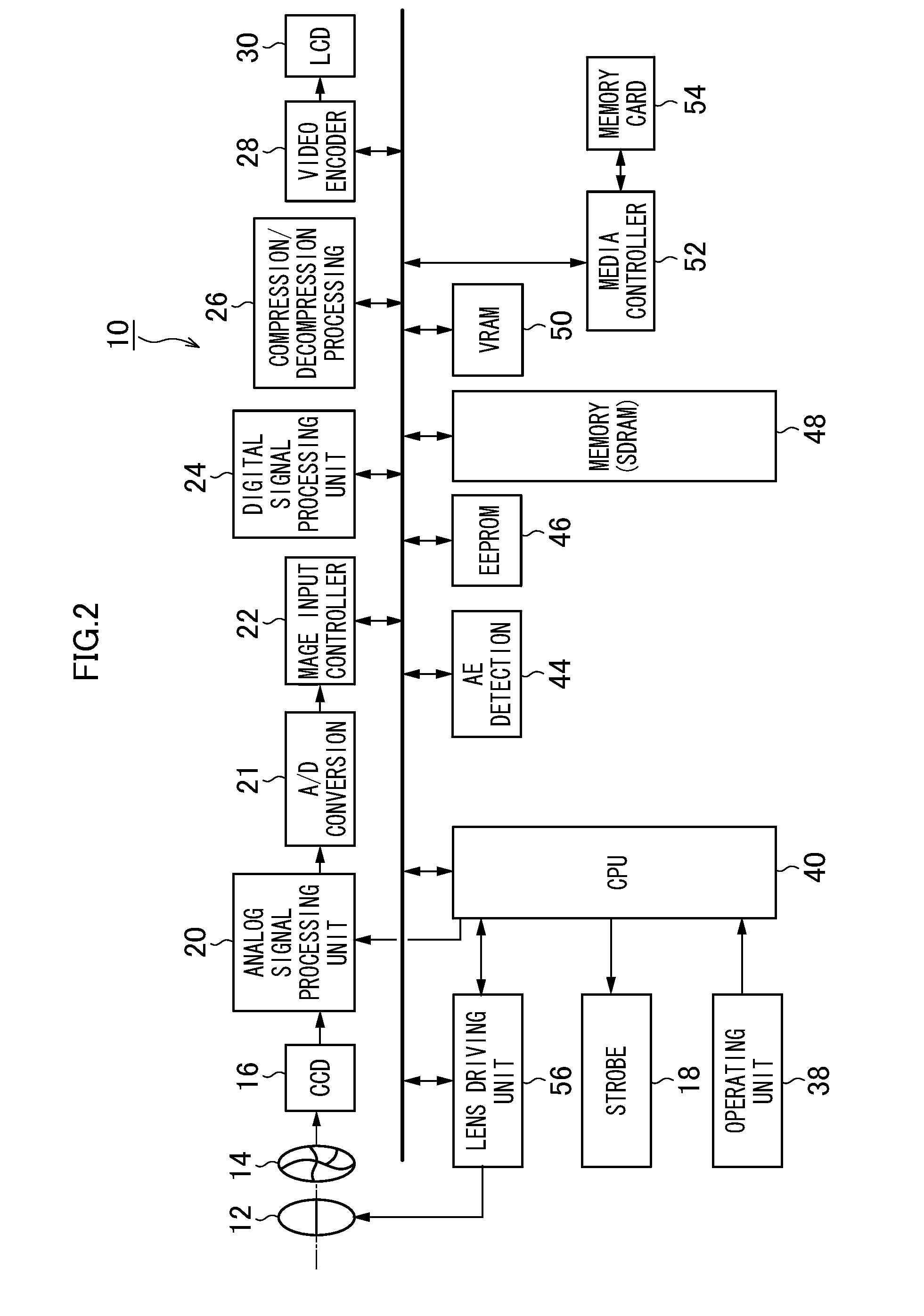Imaging device
a technology of imaging device and image, which is applied in the field of imaging device, can solve the problems of low followability to a change of imaging conditions such as a change of subject position, burdening the processing performance of imaging device, and achieving the effect of quick and easy acquisition and favorable image quality
- Summary
- Abstract
- Description
- Claims
- Application Information
AI Technical Summary
Benefits of technology
Problems solved by technology
Method used
Image
Examples
first embodiment
[0063]
[0064]FIG. 1 is an external perspective view of an imaging device 10 (imaging device) according to a first embodiment of the present invention, and FIG. 2 is a block diagram depicting the structure of main parts of the imaging device 10. As depicted in FIG. 1, the imaging device 10 has a front surface where a taking lens 12, a strobe 18, and so on are arranged and an upper surface where a release button 38-1 is provided. L1 denotes an optical axis of the taking lens 12.
[0065]FIG. 2 is a block diagram depicting depicting the structure of main parts of the imaging device 10. The operation of the entire imaging device 10 is controlled in a centralized manner by a central processing unit (CPU) 40, and programs (including programs for use in image generation / combing processing, which will be described further below) and parameters are stored in an EEPROM (Electronically Erasable and Programmable Read Only Memory) 46.
[0066]The imaging device 10 is provided with an operating unit 38 ...
second embodiment
[0115]
[0116]Next, a second embodiment of the imaging device according to the present invention is described. While the focal distance is changed based on the user operation or instruction input in the first embodiment described above, the case is described in the second embodiment in which the focal distance is automatically changed based on a distribution of a subject distance.
[0117]Also in the second embodiment, the basic structure of the imaging device is similar to that of the first embodiment, and therefore differences are described below. FIG. 15 is a diagram of a functional structure of a CPU in the second embodiment. In the second embodiment, the CPU 40 has the following functions f1 to f4.
[0118]As with the first embodiment, the image generation / combining function f1 is a function of generating images each corresponding to the focal distance and the focal length in each region of the taking lens 12 by using imaging signals outputted from the CCD 16 and generating an image ob...
third embodiment
[0125]Next, a third embodiment of the imaging device according to the present invention is described. While the cases have been described in the first and second embodiments described above in which the focal distances of the respective regions of the taking lens are different from each other and the focal distance is changed, the cases are described in the third embodiment in which the focal distances of the respective regions of the taking lens are equal to each other and the focal length is changed.
[0126]Since the imaging device according to the third embodiment is basically similar to those of the first and second embodiments (refer to FIG. 2), differences are described below.
[0127]A taking lens 12′ in the imaging device according to the third embodiment has a first region 12a′ and a second region 12b′, and these regions are at an equal focal distance and with different focal lengths (image magnifications). And, these two focal regions act as two lenses physically separated from...
PUM
 Login to View More
Login to View More Abstract
Description
Claims
Application Information
 Login to View More
Login to View More - R&D
- Intellectual Property
- Life Sciences
- Materials
- Tech Scout
- Unparalleled Data Quality
- Higher Quality Content
- 60% Fewer Hallucinations
Browse by: Latest US Patents, China's latest patents, Technical Efficacy Thesaurus, Application Domain, Technology Topic, Popular Technical Reports.
© 2025 PatSnap. All rights reserved.Legal|Privacy policy|Modern Slavery Act Transparency Statement|Sitemap|About US| Contact US: help@patsnap.com



